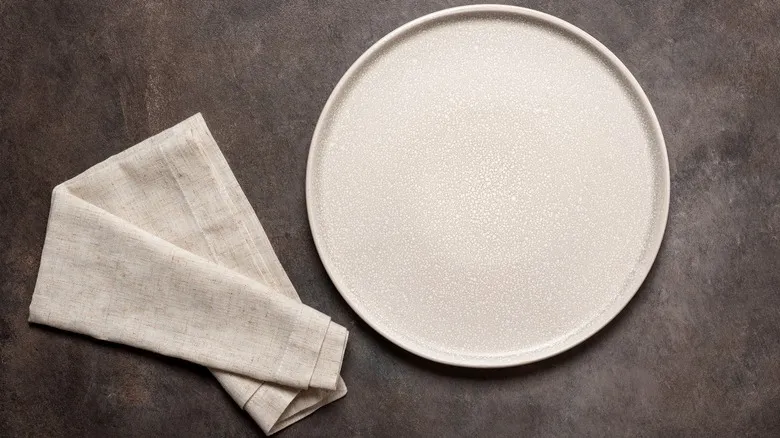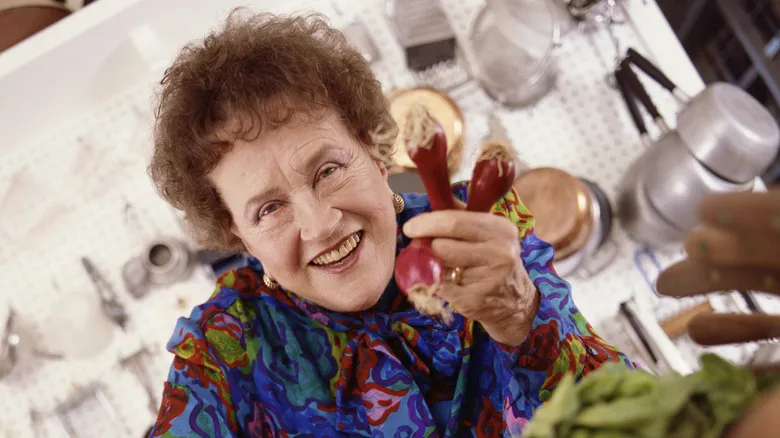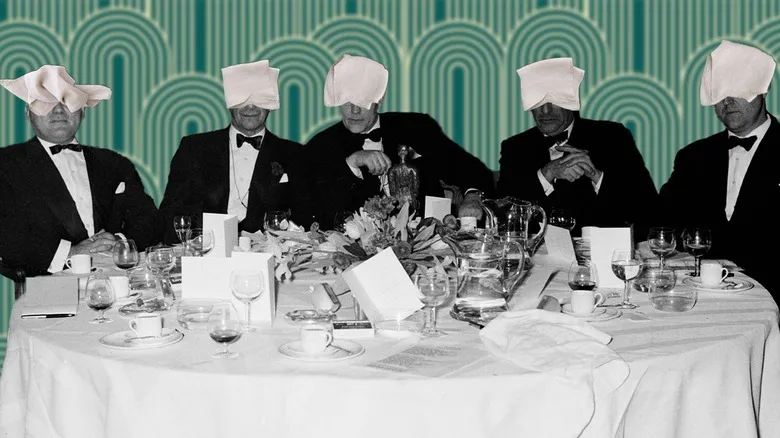The ins and outs of eating ortolan

Poachers capture the ortolan as they migrate through southwestern France in the fall, employing nets or glue on tree branches. Once caught, the birds are confined in small, dark cages and force-fed grains and ripe figs to fatten them. When they reach the desired size (some can more than double their weight), the ortolan are submerged in Armagnac—a type of French brandy that also serves as a marinade. They are then plucked, boiled, and served whole and piping hot.
Tradition requires that the diner consume the entire bird, except for the beak, in one bite (yes, that includes the bones). As for the flavor, the late, great Anthony Bourdain captured the essence of this controversial delicacy perfectly: "It's sort of a hot rush of fat, guts, bones, blood, and meat, and it's really delicious," he shared with Stephen Colbert in a 2011 interview, as reported by The New York Times.
The case for napkins

Regarding the napkins and shrouds previously mentioned, there isn't a clear explanation for why individuals cover their heads while eating ortolan. It is believed that this practice may have originated as a way to conceal what could be perceived as a sinful or blasphemous act from the gaze of an omniscient God. In contemporary times, it might be that diners are attempting to hide their actions from others due to the legal repercussions associated with hunting these birds. However, given that the napkin tradition is so closely tied to the consumption of ortolans, using a napkin might actually draw more attention to the act rather than less.
Another common theory is that covering oneself shields fellow diners from the unsettling sight of how ortolans are eaten. After all, watching someone consume an entire bird at the next table is hardly an appetizing view. Additionally, draping a shroud over the head may help to capture the delicate aroma of the dish, providing the diner with a more immersive experience that goes beyond taste. Regardless of the reason, the future of this tradition remains uncertain — it’s possible that no one will be enjoying ortolan, whether under a napkin or not, if these small birds are hunted to extinction.
Recommended

How The 1984 Olympics Changed Food For The Games Forever

The Only Cooking Tasks Julia Child Used Her Microwave For

Salsa Golf: The Obscure Sauce Created By A Nobel Prize Winner

Kitchen Tools That Were Popular 50 Years Ago But No One Uses Anymore
Next up

